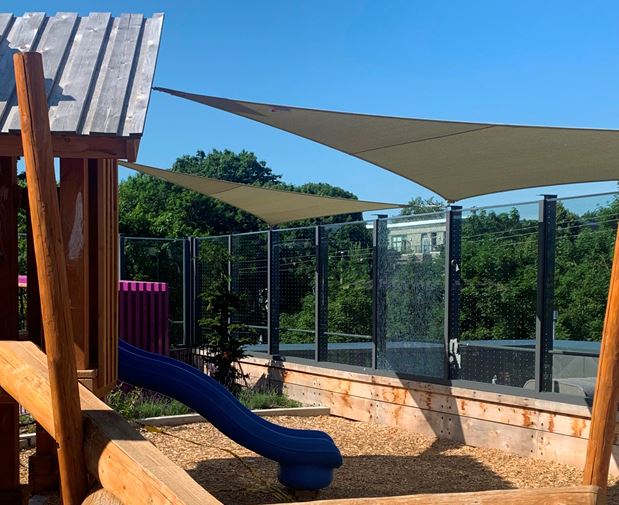Skin cancer is one of the most preventable cancers, but rates of skin cancer are rising in British Columbia. Lifetime exposure to ultraviolet (UV) radiation, or rays, is a contributing factor to many diagnoses. Each sunburn has an effect on skin cancer risk, even if the sunburn is mild.
Experts with BC Cancer note that people are especially vulnerable to the long-term harmful effects of UV rays in early childhood and that effective UV protection during this period can reduce the future occurrence of melanoma, the most common and most deadly form of skin cancer.

To help reduce future risk of developing skin cancer, researchers at BC Cancer are embarking on a six month study to assess the impact of installing a shade structure in an outdoor play space through the spring, summer and fall on UV exposure and physical activity among children aged 3-5.
Limiting UV exposure through the spring and fall isn’t often as top-of-mind as it is in the summer, however UV rates can remain high in B.C. despite seasonal cloud cover. The importance of reviewing UV exposure through the spring and fall will provide critical local data that could inform preventative measures to reduce exposure for children at daycare centres, preschools and schools around the province.
“My son’s daycare is located on a rooftop and I’m glad the kids get to spend lots of time outside,” says Aline, a mother whose son is participating in the shade study. “The kids get a lot of direct sun exposure and my son has already had a sunburn on his neck during the first sunny days in the spring. I’m really happy the shades are being installed. I know it will make a difference. I was exposed to a lot of UV rays in my childhood so I am very much aware of the importance of preventing sun damage as early in life as possible.”
Researchers will also be assessing whether the installation of shade structures is correlated to physical activity rates. The hope is that the shade structure allows children to maintain a comfortable body temperature while playing outdoors and as a result be more physically active in the summer months without reducing a child’s desire to use the play spaces that are being covered, particularly in the spring and fall months.
British Columbian’s wishing to protect themselves and their families from UV exposure are encouraged to check Environment Canada’s UV Index, no matter the time of year, to determine how strong the sun’s UV rays are each day and protect themselves accordingly. Some of the ways to reduce daily UV exposure are:
- Avoid being out in the sun between 11:00am – 3:00pm
- Stay in the shade whenever possible
- Wear protective clothing including a hat and sunglasses
- Use a “broad-spectrum” sunscreen and lip balm of at least 30 SPF
- People who work outdoors should attach a back flap to their helmets or hats, to cover the back of the neck and use a visor for the front of the face
- Avoid tanning beds and opt for UV free products for a sunless tan
This year, it is projected that 1,345 British Columbians will be diagnosed with melanoma. By 2031, that number is expected to rise more than 26 per cent to 1,705.
For more information on how you can practice safe sun, visit BC Cancer’s Practice Safe Sun webpage.

